Explore Gwangju - South Korea Travel, Asia
Gwangju is a vibrant metropolitan city located in the southwestern part of South Korea. It is situated at an elevation of approximately 43 meters above sea level and covers an area of about 501 square kilometers. Travelers are drawn to Gwangju for its fascinating history, vibrant arts scene, and beautiful natural surroundings. The city's commitment to democracy and human rights, as exemplified by the May 18th Memorial, also makes it a compelling destination for those interested in social justice movements.
Population: Estimate 1.5 million people (as of 2024)
Economy: Gwangju's economy is driven by its strong manufacturing sector, particularly in automotive and electronics industries. The city is also a hub for arts, culture, and innovation, with growing investments in green energy and smart city projects, fostering sustainable development.
Cultural Significance: Mudeungsan National Park, May 18th National Cemetery, Gwangju National Museum, Gwangju Folk Museum, Jeungsimsa Temple, Asia Culture Center, Gwangju Science Center, 1913 Songjeong Station Market
South Korea

Overview of Gwangju
History & Cultural Influence
Gwangju's rich history and cultural influence have deeply shaped its identity, making it a city known for both its resilience and creativity. Its roots stretch back to the Three Kingdoms period (57 BCE–668 CE), when it served as a vital center of trade and administration, setting the stage for its long-standing strategic significance. Today, the event stands as a powerful symbol of resistance and is commemorated annually, underscoring Gwangju's enduring spirit of democracy.
Culturally, Gwangju is an artistic hub, renowned for the Gwangju Biennale, an international contemporary art festival that draws artists from across the globe, showcasing the city’s dedication to cultural innovation. Its culinary reputation is equally strong, with kimchi being a centerpiece of its rich food heritage, celebrated every year at the World Kimchi Culture Festival. Gwangju is also home to respected educational institutions like Chosun University and Chonnam National University, contributing to its status as a center of learning and culture.
Interaction with The Locals
It’s the sixth-largest city in South Korea, and while most of the population is Korean, Gwangju is also home to the Koryo-saram community—ethnic Koreans from the former Soviet Union—adding an interesting layer of cultural diversity to the city. The people of Gwangju are known for their warm hospitality and openness, shaped by the city’s rich history and its fight for democracy. Locals take great pride in their cultural heritage, which you'll see reflected in the vibrant festivals, bustling markets, and delicious food. The city’s role as a hub for art and culture—highlighted by events like the Gwangju Biennale—also reflects its welcoming attitude toward global visitors. While Korean is the primary language, many younger locals speak some English, though learning a few basic Korean phrases will make your interactions even more enjoyable!
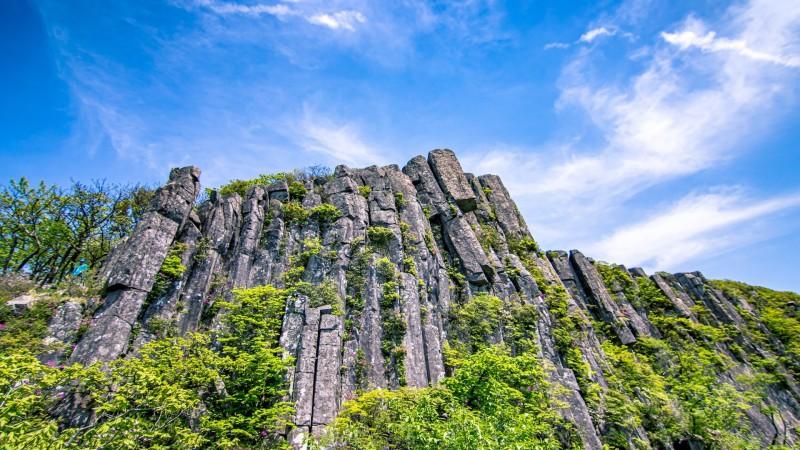
Mudeungsan National Park - © gorkhe1980
Top attractions in Gwangju
Gwangju offers a captivating mix of culture, history, and natural beauty for travelers. Top attractions include Mudeungsan National Park, perfect for hiking and scenic views, and the May 18th National Cemetery, a poignant tribute to South Korea’s democracy movement. Don’t miss Yangdong Market for authentic street food and vibrant local culture.
Mudeungsan National Park
Mudeungsan National Park is a nature lover’s paradise, famous for its rugged mountains and scenic beauty. Whether you're an avid hiker or just enjoy a peaceful walk, the park has a variety of trails suited to all skill levels. The higher you climb, the more rewarding the views get, offering stunning vistas of the surrounding landscape. Along the way, you'll encounter diverse flora and fauna, making the journey just as captivating as the destination. Ancient temples are nestled within the park as well, providing moments of reflection amid the natural splendor. If you're looking for a perfect blend of history and nature, Mudeungsan National Park is a must-visit.
May 18th National Cemetery
The May 18th National Cemetery stands as a powerful symbol of South Korea’s fight for democracy. It commemorates the victims of the 1980 Gwangju Uprising, a critical event in the nation's history. As you walk through the grounds, you'll find poignant memorials and monuments honoring those who sacrificed their lives during this turbulent period. It’s a solemn yet meaningful place to visit, where you can learn more about the country’s path to democracy while paying respects to the fallen. The atmosphere here encourages quiet reflection, making it an emotional and educational experience for visitors.
Gwangju Folk Museum
If you’re curious about traditional Korean culture, the Gwangju Folk Museum is the place to be. This museum provides a fascinating glimpse into the customs and everyday life of Koreans from different historical periods. From traditional clothing and household items to displays on local customs, you’ll walk away with a deeper understanding of the region's cultural heritage. The museum is engaging for both adults and children, making it a great stop for families looking to learn more about the country’s rich traditions.
Gwangju National Museum
History buffs will love the Gwangju National Museum, which houses an impressive collection of artifacts from Korea’s long and storied past. From ancient relics to beautiful works of art, the exhibits here cover a wide range of historical periods, offering insight into the country’s cultural development. Whether you’re fascinated by ancient pottery, old manuscripts, or intricate artworks, this museum gives you a deeper appreciation for Korea’s rich heritage. It’s a must-visit for anyone interested in history and culture.
Yangdong Market
For a true taste of local life, head to Yangdong Market. This bustling traditional market is a feast for the senses, known for its vibrant energy and incredible street food. Here, you can sample a variety of local culinary delights, from handmade sandwiches to tasty snacks that represent the best of Korean street food. It’s the perfect spot to immerse yourself in the local food culture while exploring the market’s lively atmosphere. Whether you’re in the mood for a quick bite or just want to experience the hustle and bustle of a traditional market, Yangdong has you covered.
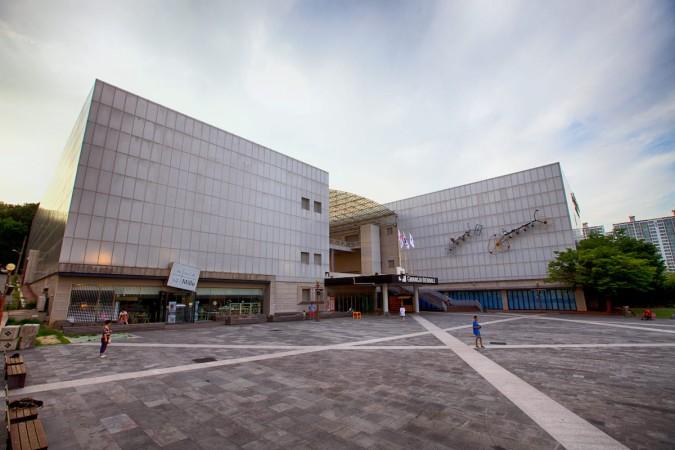
Gwangju Biennale Exhibition Hall - © Artribune
Must-Try Dishes in Gwangju
Gwangju is celebrated for its rich culinary heritage, offering a variety of local specialties that reflect the flavors and traditions of the Jeolla region. Here are some must-try dishes when visiting Gwangju:
- Tteokgalbi (Grilled Short Rib Patties): Tteokgalbi is Gwangju's must-try dish, crafted from minced beef short ribs mixed with a blend of savory seasonings, then grilled to mouthwatering perfection. It's a dish often reserved for special occasions, thanks to its tender, melt-in-your-mouth texture and rich, smoky flavor.
- Gwangju-style Bibimbap: This vibrant dish is a feast for both the eyes and the taste buds, featuring a colorful array of fresh vegetables, marinated beef, and the city’s signature gochujang (red chili paste) sauce, all layered over perfectly steamed rice. It's a delicious reflection of Gwangju's emphasis on fresh, seasonal ingredients and balanced nutrition, making it a hit with tourists looking to enjoy an authentic, flavorful meal.
- Kimchi: Kimchi may be a staple of Korean cuisine, but Gwangju is particularly renowned for its wide variety. The city is so proud of its kimchi that it even hosts the Gwangju World Kimchi Festival every year! Gwangju's kimchi is known for bold, complex flavors, often incorporating local ingredients like fresh vegetables and seafood.
- Mudeungsan Makgeolli: Mudeungsan Makgeolli is a beloved local rice wine with roots in the region surrounding the scenic Mudeungsan Mountain. Lightly carbonated with a subtle sweetness and savory notes, this traditional unrefined rice wine is a refreshing pairing with many Korean dishes. It’s not just a drink—it’s a taste of Gwangju’s agricultural heritage.
- Jeolla-style Jjigae: Gwangju is well-known for its hearty, comforting stews, or jjigae. These flavorful dishes are packed with tofu, vegetables, and various proteins, all simmered together with local spices until bubbling hot. Perfect for sharing with friends and family, Gwangju’s jjigae reflects the region’s agricultural richness and is a warm, satisfying staple in the city’s food scene.
- Kimbap: Kimbap might be a popular snack across Korea, but Gwangju has its own delightful twists on this classic dish. These seaweed-wrapped rice rolls are filled with crunchy vegetables, pickled radish, and sometimes local seafood or meats, making them a portable, flavorful meal. Perfect for picnics or as a quick snack, kimbap in Gwangju showcases the city’s lively street food culture and love for fresh, convenient bites.
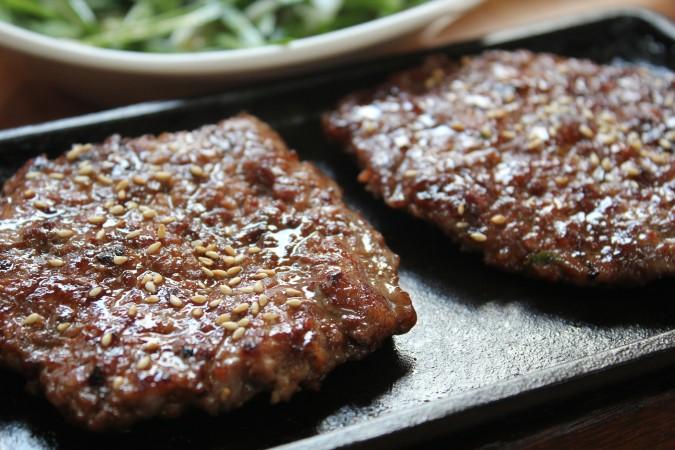
Tteokgalbi - © Wikimedia
Weather in Gwangju: Best Time to Visit
Average Temperatures in Gwangju
- Summer (June to August): Summers in Gwangju are warm, with daytime highs ranging from 26°C to 30°C (79°F to 86°F). August tends to be the hottest month, with temperatures hovering around 29°C (84°F). Evenings offer some relief, as lows settle between 19°C and 23°C (66°F to 73°F).
- Autumn (September to November): As autumn arrives, the heat begins to fade. Highs drop from 26°C (79°F) in September to around 13°C (55°F) by November. Nights also cool down significantly, with lows ranging from 17°C (63°F) in September to 6°C (43°F) by the end of autumn.
- Winter (December to February): Winters are quite chilly, with daytime temperatures typically between 3°C and 8°C (37°F to 46°F). January is the coldest month, where nighttime lows can dip to between -5°C and -1°C (23°F to 30°F).
- Spring (March to May): Spring brings a gradual warm-up. In March, highs start at 10°C (50°F) and rise to a pleasant 24°C (75°F) by May. Evenings are cool in early spring, with lows starting at 0°C (32°F) in March, increasing to 12°C (54°F) by May.
Rainfall in Gwangju
Gwangju experiences notable seasonal shifts in rainfall.
- Wet Season (June to September): The summer months are the rainiest, especially in July, which sees about 300 mm (11.8 inches) of rainfall over roughly 15 days. Expect regular showers during this time.
- Dry Season (January): The driest month is January, with minimal rainfall, averaging just 10 mm (0.4 inches).
Humidity and Other Weather Patterns
- Humidity: Summers in Gwangju can feel especially hot due to high humidity, often exceeding 70%, making the heat feel more intense.
- Snowfall: While snow is rare, Gwangju does see occasional snowfall in winter, primarily in January, with an average accumulation of around 4 cm (1.6 inches).
- Sunshine: The city enjoys plenty of sunshine, particularly in late spring and autumn. May and October are usually the sunniest months.
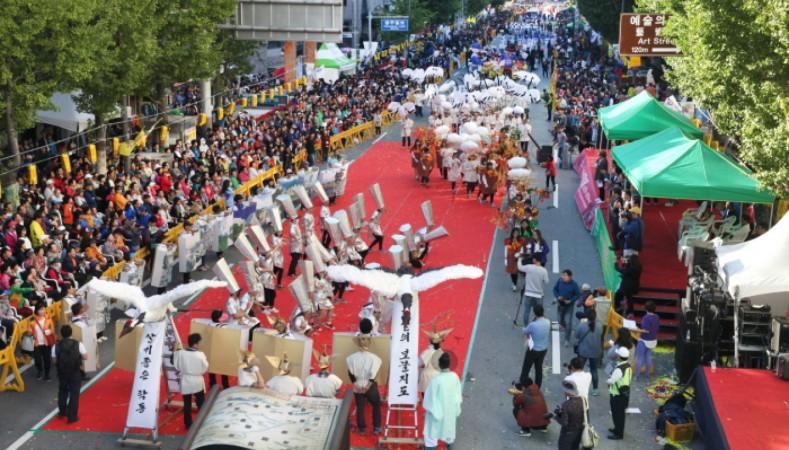
Gwangju Chungjang Festival - © Gjdaily.net
Festivals & Local Celebrations
Gwangju Chungjang Festival
- When: Every October
- Location: Chungjang-ro, Gwangju
- This lively festival celebrates Gwangju's rich history and cultural diversity. The highlight is the vibrant Chungjang World Parade, featuring themed floats from different districts. Visitors can step back in time by enjoying traditional tea at old-style cafes and participating in activities reflecting Gwangju's evolution from the 1970s to the early 2000s.
Gwangju Biennale
- When: September to November (every two years)
- Location: Gwangju Biennale Exhibition Hall
- As one of Asia’s most prestigious contemporary art events, the Gwangju Biennale features works by renowned artists from around the world. Along with exhibitions, the event includes performances and talks, making it a key cultural attraction in the city.
Gwangju International Film Festival
- When: Typically held in late September
- Location: Various cinemas and venues in Gwangju
- This film festival showcases independent films from around the globe, providing a platform for filmmakers and fostering discussions about cinema, culture, and artistic expression.
5.18 Memorial Day
- When: May 18
- Location: 5.18 Democracy Square and other sites
- This significant day commemorates the Gwangju Uprising of 1980. The city hosts memorial services, exhibitions, and performances to honor the victims and celebrate the ongoing struggle for democracy.
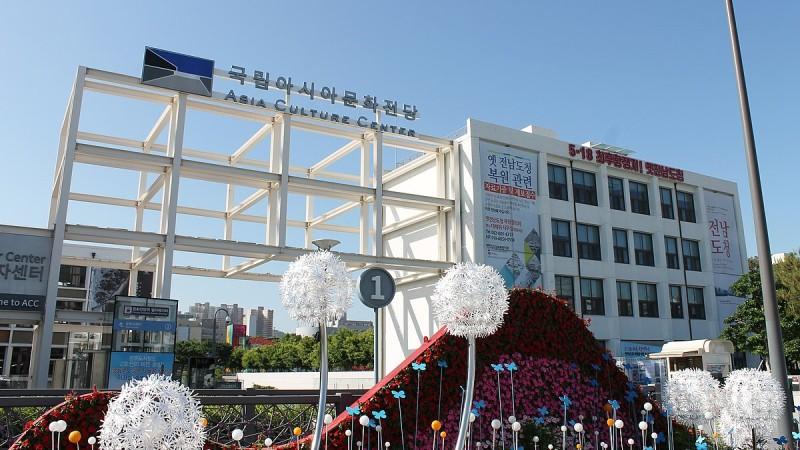
Gwangju Chungjang Festival - © Wikimedia
Shopping in Gwangju
Gwangju offers a diverse shopping experience, from bustling markets to trendy shopping districts. Here are some recommended areas and stores to explore, especially for local crafts and souvenirs.
- Chungjang-ro: Chungjang-ro is truly the beating heart of Gwangju's shopping scene. With its lively atmosphere and pedestrian-friendly streets, it's the perfect place for a relaxed day of retail therapy. You’ll find a blend of trendy boutiques, casual clothing stores, and charming cafes.
- Geumnam-ro: Geumnam-ro is another must-visit shopping district in Gwangju. Lined with trendy shops and cozy eateries, it’s a great spot to discover local fashion and unique boutiques. The street offers a nice balance between high-street brands and smaller, independent stores that reflect Gwangju’s local style. If you're in the mood to explore the city’s fashion-forward side, Geumnam-ro won’t disappoint.
- Yangdong Market: If you're looking for a more traditional shopping experience, Yangdong Market is the place to be. This bustling market offers everything from fresh produce to handmade crafts and local snacks. It’s the perfect spot to pick up authentic souvenirs and experience the true atmosphere of Gwangju. Don’t leave without trying some traditional Korean snacks—you’ll find plenty of vendors serving up delicious treats.
- 1913 Songjeong Station Market: Step back in time at the 1913 Songjeong Station Market, where a retro vibe meets modern street food and unique shops. Strolling down the long street, you’ll encounter a variety of street food vendors, cafes, and quirky stores. For a fun twist, you can even rent traditional Korean school uniforms and snap some nostalgic photos. This market offers a perfect blend of shopping and cultural exploration.
- Namgwangju Market: Namgwangju Market is a seafood lover’s dream. Known for its fresh catches and local delicacies, this market also offers a variety of Korean dishes, fruits, and even clothing. It's an ideal spot to sample some of Gwangju’s finest local cuisine while browsing for unique souvenirs. Whether you're here for the food or the shopping, Namgwangju Market is a true local gem.
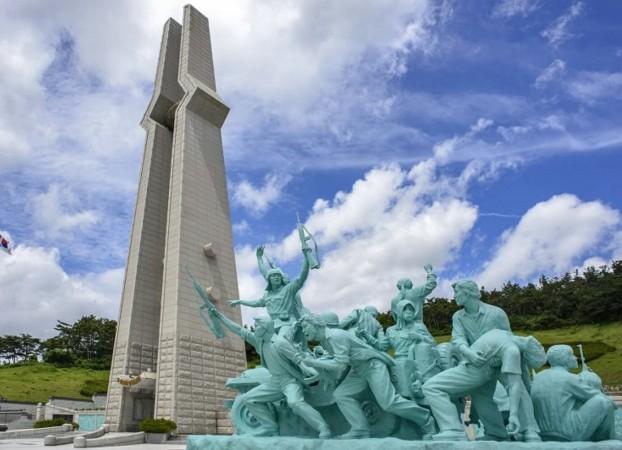
May 18th National Cemetery - © Ryan M
Culture Etiquette in Gwangju
- Greetings and Interactions: In Korea, a slight bow is the norm when greeting others, especially elders or those in positions of authority. For casual encounters, a simple nod will do. When giving or receiving objects, particularly from elders or superiors, use both hands as a sign of respect. While friendliness is appreciated, excessive physical contact or public displays of affection are best avoided, as they can be seen as inappropriate in more formal settings.
- Dining Etiquette: When it comes to meals, patience is key—wait for the elders or your hosts to begin before digging in. Proper use of chopsticks and spoons is important; for instance, never stick chopsticks upright in your rice as it resembles funeral rites. It’s also polite to sample a little bit of everything that’s offered, even if it’s just a small amount. Pouring drinks for others, especially elders, is a gesture of respect, and they'll likely return the favor.
- Public Behavior: When entering homes, temples, and some traditional restaurants, it’s customary to remove your shoes. Modest dress is expected, particularly at religious sites. Koreans also appreciate quietness in public spaces, so try to avoid talking too loudly or behaving disruptively while out and about.
- Cultural Sensitivity: If you visit sites related to the Gwangju Uprising, be mindful of the deep historical significance they hold for Koreans. Always show respect, especially when discussing or photographing these locations. Similarly, if you're visiting Buddhist temples, it's important to honor the traditions and practices there. Learning a few basic Korean phrases, like greetings or thank you, goes a long way and is always appreciated by locals.
- Other Considerations: Tipping isn’t a common practice in Korea, so it’s not expected in most situations. On public transportation, it's courteous to give up your seat for the elderly, pregnant women, or anyone in need. Lastly, keep in mind Korea’s "hurry hurry" culture—punctuality and efficiency are highly valued, so try to be on time and prepared in most situations.
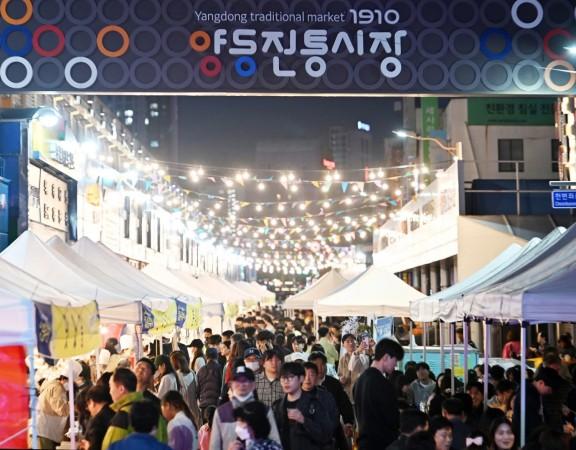
Yangdong Market - © Gwangju Tourism
Essential Travel Information
Getting Around Gwangju
- City Buses: Gwangju has an extensive bus system that makes getting around the city easy, affordable, and serve all the major districts and attractions. The buses are color-coded for convenience:
- Blue buses: Main lines that cover longer routes.
- Green buses: Branch lines for shorter, local routes.
- Red buses: Rapid service for faster connections between key areas.
- Subway: Gwangju’s subway system has just one line, but it’s incredibly useful. It runs from the northwest to the southeast, covering important stops like: Gwangju Bus Terminal, Culture Complex, Gwangju Airport. It’s a clean, punctual, and user-friendly option for getting across the city.
- Taxis: Taxis in Gwangju are readily available, reasonably priced, and perfect for direct routes. While most drivers may not speak English, having your destination written in Korean can help a lot. Alternatively, you can use the Kakao T app to book taxis and make communication easier.
- Bicycle Rentals: If you’re looking for an eco-friendly way to explore the city, Gwangju offers a public bike rental system. It’s a great option, especially if you're visiting parks or less congested areas.
- Walking: Many of Gwangju’s top attractions are within walking distance of each other, particularly downtown and around the cultural sites. The city is pedestrian-friendly, with good sidewalks and crosswalks, making it a pleasure to explore on foot.
ATM and Banking Services
- ATMs: Finding an ATM in Gwangju is easy, with many options that accept international cards. Look for machines labeled with "international cards," "Cirrus," or "Visa" to ensure your card will work. Most bank ATMs are located in lobbies and are accessible from 8 am to 10 pm, though hours may vary. After 10 pm, options can be limited, so it’s a good idea to plan ahead if you need cash late at night.
- Banks: Gwangju is home to several major banks that offer reliable services to both locals and visitors. Some of the prominent banks include: Korea Exchange Bank (KEB), Woori Bank, KB Bank, Shinhan Bank, Citibank. Banking hours typically run from 9 am to 4 pm on weekdays, so plan your visits during these times for any in-person services.
- Currency Exchange: If you need to exchange foreign currency, most banks in Gwangju offer quick and efficient exchange services. Be sure to bring your passport or alien registration card for identification. The process is generally smooth, and you can expect it to take less than five minutes.
Where to Stay in Gwangju
- Luxury Hotels: For those seeking top-tier amenities, these hotel offers spacious rooms, an indoor pool, and all the comforts of a high-end stay.
- Mid-range Hotels: Located near many attractions in the city, these cozy hotels features modern amenities and a complimentary breakfast buffet, perfect for those looking for a comfortable, mid-range option.
- Budget-friendly Choices:
- Guesthouse in Dong-gu: Set in a peaceful neighborhood, this guesthouse offers comfortable rooms with shared facilities and even boasts a rooftop terrace for guests to enjoy.
- Guesthouse in Seo-gu: Centrally located, this guesthouse provides clean rooms and shared bathrooms, along with access to kitchen facilities for a more home-like stay.
- Unique Stays:
- Pension in Gwangsan-gu: Situated on the outskirts of Gwangju, this pension offers spacious rooms with private bathrooms and kitchen facilities, ideal for travelers looking to combine outdoor activities with a comfortable stay.
- Guesthouse in Nam-gu: Modern and stylish, this guesthouse features private bathrooms, a lovely garden, and free bicycles, making it perfect for those who want to explore the area on two wheels.
Articles for you

Explore Yala National Park - Sri Lanka Travel, Asia
Tucked away in Sri Lanka’s southeastern corner, Yala National Park is where wild nature meets deep tradition. Known worldwide for its leopard population, the park is also home to elephants, sloth bears, crocodiles, and hundreds of bird species. Beyond wildlife, Yala opens doors to a cultural landscape dotted with ancient temples, Buddhist ruins, and coastal villages. For travelers seeking more than just a safari, Yala offers a chance to explore eco-tourism, local communities, and sacred heritage sites.
Population: The Yala National Park area doesn’t have a human population.
Economy: The economy around Yala National Park thrives on a blend of eco-tourism, agriculture, and local services. Safari tours, eco-lodges, and cultural experiences drive steady income for nearby towns like Tissamaharama and Kataragama, supporting thousands of families.
Landmarks: Famous for Block I of Yala and wildlife encounters, including elephants, sloth bears, crocodiles, and exotic bird species.

Explore Galle - Sri Lanka Travel, Asia
Nestled on Sri Lanka’s southern coastline, Galle is a vibrant city where history meets the sea. Its cobbled streets, colonial architecture, and serene beaches make it a must-visit destination for travelers seeking a blend of culture, adventure, and relaxation. A UNESCO World Heritage site, Galle captivates visitors with its Dutch Fort, bustling markets, and friendly locals. Whether you’re exploring the ramparts at sunset or savoring fresh seafood by the shore, Galle promises an unforgettable journey into Sri Lanka’s heritage.
Population: Approximately 113,000 in 2023.
Economy: Galle’s economy thrives on tourism, trade, and fisheries. The city’s historic fort, colonial architecture, and coastal charm draw thousands of international visitors each year, making tourism its main economic driver. Fishing remains vital for local livelihoods, supplying fresh seafood across the region.
Landmarks: Famous for the Galle Fort, Dutch Reformed Church & Maritime Museum, and Unawatuna Beach.

Explore Bentota - Sri Lanka Travel, Asia
Nestled along Sri Lanka’s southwestern coast, Bentota is a tropical paradise that blends golden beaches, vibrant culture, and thrilling adventures. Famous for its calm waters, luxury resorts, and scenic river estuary, Bentota has become a top destination for travelers seeking both relaxation and authentic experiences. From serene beach walks at sunrise to adrenaline-pumping water sports, this coastal town offers a perfect balance of leisure and exploration. With its proximity to Colombo and Galle, Bentota is easy to reach, making it an ideal stop for both short escapes and extended holidays.
Population: Approximately 37,000 in 2023.
Economy: Bentota’s economy thrives mainly on tourism, which drives local businesses such as hotels, restaurants, and wellness retreats. The town also benefits from fishing, coconut cultivation, and handicrafts like wood carving and batik textiles. Many residents rely on the growing demand for water sports and Ayurvedic treatments, making tourism the backbone of both income and employment in the area.
Landmarks: Famous for Bentota Beach, Bentota River Safari, and Kande Vihara Temple.

Explore Mirissa - Sri Lanka Travel, Asia
Mirissa is a charming coastal town on Sri Lanka’s southern shoreline. Known for its golden beaches, turquoise waters, and vibrant marine life, it has become a must-visit stop for travelers exploring the island. Many come for whale watching, surfing, and sunset views at Coconut Tree Hill, but Mirissa offers much more than postcard beauty. The fishing boats you see anchored by the bay carry generations of stories. Local traditions, delicious cuisine, and a laid-back rhythm of life shape every visitor’s experience.
Population: Approximately 4,700 in 2023.
Economy: Mirissa’s economy is largely shaped by its coastal location. Fishing has long been the backbone of local livelihoods, with generations relying on the Indian Ocean for income. In recent decades, tourism has become the main driver of growth, thanks to whale watching, surfing, and beachside hospitality.
Landmarks: Famous for Mirissa Beach, Coconut Tree Hill, and Parrot Rock Bridge.

Explore Nuwara Eliya - Sri Lanka Travel, Asia
Tucked away in the Central Highlands of Sri Lanka, Nuwara Eliya is often called “Little England”. With its rolling tea plantations, cool misty mornings, and colonial charm, this mountain town feels like a step into another world. Travelers come here to breathe fresh air, walk through flower gardens, sip the finest Ceylon Tea, and enjoy a pace of life far from the island’s busy cities. Whether you’re drawn by scenic landscapes, heritage architecture, or the warmth of its people, Nuwara Eliya is a destination that blends nature, culture, and history in perfect harmony.
Population: Approximately 781,000 in 2023.
Economy: Nuwara Eliya’s economy thrives mainly on tea production, as it sits in the heart of Sri Lanka’s central highlands, famous worldwide for Ceylon Tea. The city also benefits from a growing tourism industry, attracting visitors with its colonial charm, cool climate, and scenic landscapes.
Landmarks: Famous for Gregory Lake, Hakgala Botanical Garden, and Victoria Park.

Explore Sukau - Malaysia Travel, Asia
Nestled on the banks of the Kinabatangan River in Sabah, Malaysian Borneo, Sukau is a destination where wildlife, culture, and conservation come together. Known as one of Asia’s top spots for river safaris and eco-tourism, this quiet village offers a front-row seat to encounters with Bornean orangutans, pygmy elephants, proboscis monkeys, and exotic birdlife.
Population: Approximately 1,400 in 2019.
Economy: Sukau’s economy is shaped by its riverine location and natural resources. Traditionally, the Orang Sungai community relied on fishing, small-scale farming, and forest gathering for their livelihood. Today, the village has shifted toward eco-tourism, with river cruises, jungle trekking, and homestays providing income.
Landmarks: Famous for the Kinabatangan River cruises, Gomantong Caves, and Ox-bow lakes and wetlands.
